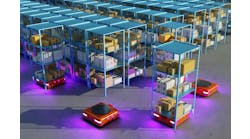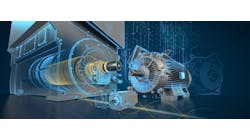A new column,
Tales From the Front is selected from reader submissions. Do you have a story about plants or process control you want to share with the readers of CONTROL? We'll make it worth your while if your column is published.
One of the least known and probably less appreciated areas of automation and control is field service. For those who know the perils of crawling around in a rusty, damp, and spider-infested field control panel or the discomfort of searching for a pressure transmitter on top of a hot cement kiln, field service is a profession deserving of respect.
For me, it was one of the most difficult and yet most rewarding jobs I have ever had. You might be working on a small shaft-driven fire tube boiler at a soup factory one day and the next be working in a brewery, chocolate factory, or even 11 stories up by elevator on the top of a utility boiler steam drum.
One of the most interesting assignments that I ever had was one where a small, overlooked design flaw helped put a sophisticated new control system into obsolescence.
My employer, a major control manufacturer, installed the world's first digital pneumatic burner management system aboard an oil tanker. It was actually an air-driven PLC made up of a block of metal discs on whose surfaces were etched hundreds of tiny passageways. It was transistor-like in function but instead of having a transistor represent a bit, it was represented by a channel with two divergent air streams. Another stream, pointed perpendicular to the two, controlled which air path the air steam followed, thereby forming either an "O" or a "1." The array of passageways constituted a permanently programmed-in-metal control logic.
It was reported that something within this system was activating and deactivating burner cycles at whim and I was asked to take a look. After taking several hours getting to the ship, I found myself in the engine room facing the 30-ft. long control panel. It had a horizontal section containing pushbuttons, switches, and indicating lights, and a vertical section for gauges and other readouts. It was divided into several sections, the boiler panel at the right-hand end.
First, I spoke with the engineer on watch, knowing from experience that a few minutes with him could save hours of troubleshooting time. He said that the problem was random and unpredictable: the only consistency was it involved the No. 4 burners of both the port and starboard boilers and none of the others.
I began inspecting everything in or around the equipment, gathering as many facts as I could, trying to find anything out of place or peculiar using outdated and inaccurate drawings as a guide. After a few hours of doing this in the heat and oiliness of the engine room and with frustration setting in, I took a break, sat down, and had a cup of coffee.
One of the unique aspects of an air-driven system like this was the pushbutton-like devices for starting and stopping the burner cycle were not electrical. They looked like ordinary pushbuttons--red for stop and green for start--but they did not move when pushed. And instead of wires, there was a very small hole drilled in each one's center with a narrow jet of high-velocity air shooting vertically upward from the control panel. To start or stop a burner, the operator would place a finger over the hole, which created a back pressure that activated the logic necessary to start or stop a burner cycle.
As I sat there looking across the engine room with my coffee, I heard a relay click, a hiss and creak as the hydraulic cylinder moved No. 4 starboard burner into the furnace, and the burner ignite as if controlled by some unseen force. Instinctually, all my years of field experience kicked in and I began looking for something out of the ordinary. It occurred to me that the only difference between this instance and any other was the operator standing close to the control panel, making sweeping gestures with a coffee cup in his hand, emphasizing a "sea story" he was telling the oiler. But I thought, "That's where the No. 4 burner pushbuttons are located."
At that moment there was a creative spark in my head as the two facts met and I thought, "Can you imagine how his will sound in my engineering report?" I talked with the engineer and as he stood by, I took my own coffee cup and waved it over the burner start-stop buttons. All of a sudden, the system came alive with burner activity. "That was it!" Apparently, the flat surface of the coffee cup retarded the air jet steams issuing out of the pushbuttons enough to trigger the burner logic; an unforeseen design gremlin.
For this and other reasons, this first attempt at air-driven logic was made obsolete, removed from the vessel, and replaced with relays. But to this day, I am very proud of this assignment. Problem-solving can be looked upon as a science but it can also be seen as an art. When you are searching for a solution to any complex and obscure problem, you need to keep your mind open to the possible, no matter how absurd or silly the possible may seem.
Robert C. Rosenbaum, PE, is a consulting control engineer in American Canyon, Calif. He can be reached at [email protected].



